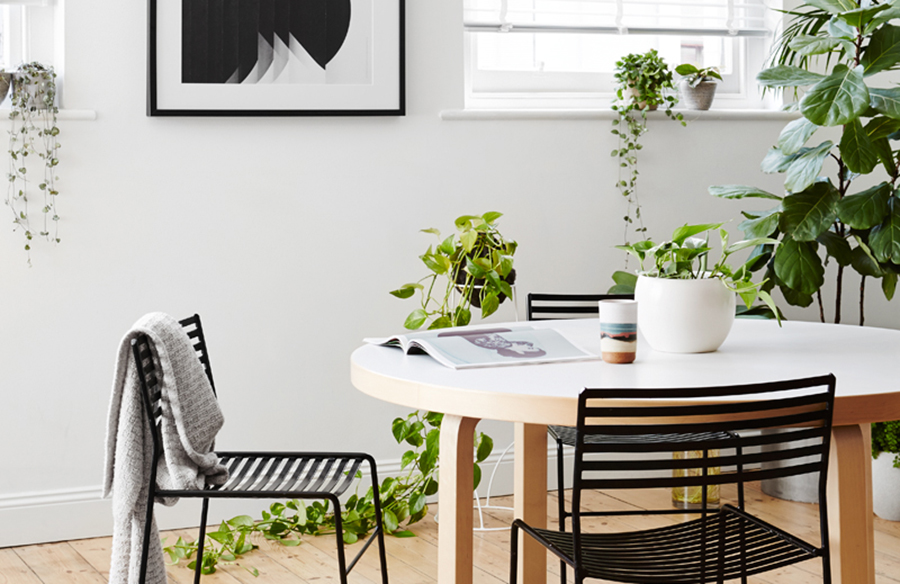Winter. It can send chills through the most skillful of plant parents. Our once usual lush, thriving specimens can all of a sudden appear dull, sad and lifeless. Don’t fret though! There’s a number of factors that can be at play in this wintry scenario. Here, we’ll break them down and once you understand what may be happening with your less-than-thriving plant friend, winter plant care really isn’t that complicated.

1. Too much water.
Throughout winter, most indoor plants go into a dormant phase (kind of like hibernation). This period of rest can be crucial to their survival and in terms of plant care throughout this stage, their water needs decrease. Signs your plant is getting too much water can include consistently very moist soil, fungus gnats (those pesky little flies; they love to lay their eggs in moist potting soil), yellowing leaves (though this can also occur in some plants with lack of water so look for another sign of ‘too much water’ to confirm it). As a general rule, only water your plant when the top inch or so of soil has completely dried out.

2. It’s a Temperature Thing.
During winter, temperatures indoors can fluctuate dramatically, from heaters blasting hot air to chilly drafts emanating from windows. Unfortunately, this spells trouble for our plant friends. The drafts from windows can get very cold when the temperature outside drops at night. Move plants away from windows and into a warmer spot; and if you’re lucky enough to have a sunroom or enclosed porch where the plants can get good light whilst staying warm, then even better! Also, avoid putting plants right next to fireplaces or heaters, or in the direct path of heat. To counter a home with a lot of dry air you can use a humidifier; they add a little more moisture into the environment and may help leaves from drying and turning brown. Misting your plants daily can also help.

3. Not Enough Light
You may have noticed less natural light in your home during winter? This is because the sun sits lower in the sky during this period. In terms of plant care, consider moving your gang into a more suitable position where they can soak up more of the good stuff. Also, remember to dust off your plant’s foliage; dusty leaves can prevent effective absorption of sunlight (which we know plants need to thrive). Dust can be rampant in winter as we close up the windows/doors (and crank the heaters) so keep an eye out for those dust bunnies!

4. Too Much Fertiliser
The ideal time to fertilise indoor plants is during their growth period; spring and summer. If your plants are healthy stick to this schedule. If you do however feel your plants’ nutrients are lacking, dilute your usual fertiliser by around half. Over-fertilising your plants during winter can distress them (and even kill them) so easy does it!

5. You’ve Freaked Out and Re-pot!
We hear it often from our customers; “I’m not sure what’s wrong with my plant so I’m thinking I’ll re-pot it and see what happens?”… Don’t do it! The process of repotting takes a lot out of a plant, so to do this during its rest period (yup, that’s winter) will cause extra stress and may completely kill your plant. We know it can be tempting to get that shiny new pot and plant teamed up and sitting pretty ASAP but sit tight until Spring and then go for it. Spring (and the warmer weather it brings), generally marks the start of the growing period so your plant will be so much better placed to settle into its new pot. (P.S And remember to only ever go up one pot size each time you re-pot).
Photography by Annette O’Brien
Styling by Alana Langan for IVY MUSE






